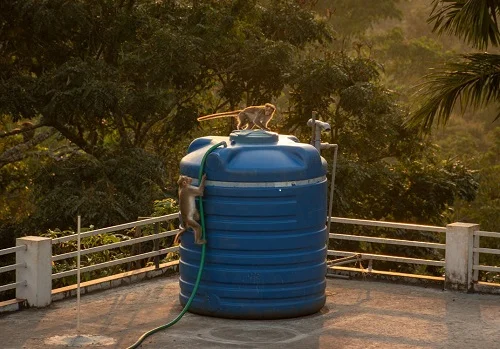A concrete septic tank is a crucial component of on-site sanitation systems in many areas, especially where public sewer systems are unavailable. These underground structures are designed to treat household wastewater before it is discharged into the environment. By separating solids from liquids, septic tanks play a vital role in wastewater treatment and protecting water quality.
Excavation preparation
The first step in installing a concrete septic tank is proper site preparation. This involves:
- Site selection: Choosing a suitable location, considering factors such as soil type, groundwater levels, and proximity to water sources.
- Excavation: Digging a hole large enough to accommodate the tank, allowing for adequate soil cover.
- Permits: Obtaining the necessary permits from local authorities.
Types of concrete septic tanks
Concrete septic tanks come in various shapes and sizes, each designed to meet specific needs. Common types include:
- Rectangular tanks: These are the most common type, offering flexibility in size and configuration.
- Circular tanks: Often used in areas with limited space or challenging soil conditions.
- Precast tanks: Manufactured in a factory and delivered to the site, reducing on-site construction time.
Importance of concrete septic tanks
- Durability: Concrete is highly durable, resistant to corrosion and decay, ensuring the long-term performance of the septic system.
- Efficiency: Properly designed and maintained concrete septic tanks effectively treat wastewater, reducing the environmental impact of sewage disposal.
- Cost-effective: While the initial investment may be higher than other materials, concrete septic tanks offer long-term cost savings due to their durability and low maintenance requirements.
The septic system: more than just a tank
A septic system consists of more than just a concrete septic tank. Other essential components include:
- Distribution box: Distributes effluent from the tank to the leach field.
- Leach field: A series of perforated pipes laid in trenches filled with gravel, where the effluent is slowly released into the soil.
- Soil: The surrounding soil plays a crucial role in the treatment process, filtering and absorbing contaminants.
Septic tank maintenance: key considerations
Regular septic tank maintenance is essential to ensure optimal performance and prevent costly repairs. Key maintenance tasks include:
- Pumping: Removing accumulated sludge and scum to prevent backups and overflows.
- Inspection: Regular inspections to identify any signs of damage or malfunction.
- Avoidance of harmful substances: Limiting the use of harsh chemicals that can disrupt the biological processes in the septic tank.
Sludge management and effluent quality
- Sludge: The solid waste that settles at the bottom of the tank.
- Effluent: The liquid that exits the tank and enters the leach field.
- Proper sludge management is crucial to prevent the tank from becoming overloaded.
- Effluent quality is influenced by factors such as the size of the tank, the efficiency of the treatment process, and the characteristics of the soil.
Environmental impact and regulations
- Environmental impact: Improperly maintained septic systems can contaminate groundwater and surface water, posing a risk to human health and the environment.
- Septic system regulations: Local governments often have regulations governing the installation, maintenance, and inspection of septic systems.
Troubleshooting common septic system problems
One of the most common issues homeowners face with septic systems is slow drains. This can be caused by:
- Clogged pipes: Tree roots, grease, or other debris can clog pipes, leading to slow drains.
- Septic tank overload: If the tank is full of sludge and scum, it can restrict the flow of wastewater.
Solutions:
- Regular pumping: Ensure the septic tank is pumped out every 3-5 years to prevent backups.
- Avoid flushing harmful substances: Avoid flushing items like grease, coffee grounds, and diapers, which can clog pipes.
- Use a plumbing snake: If you suspect a clog in the pipes, you can try using a plumbing snake to clear it.
Another common problem is foul odors coming from the septic system. This can be caused by:
- Septic tank overload: A full tank can release unpleasant odors.
- Leaking pipes: If pipes are damaged or leaking, wastewater can escape and emit foul odors.
Solutions:
- Pump the tank: A full tank should be pumped out to eliminate odors.
- Inspect the system: Look for signs of leaks or damage in the pipes or tank.
- Use odor-neutralizing products: There are commercial products available that can help mask or neutralize odors.
Choosing the right septic tank size
The size of your septic tank is crucial for its proper functioning. Factors to consider when choosing a tank size include:
- Number of bedrooms: The more bedrooms you have, the larger the tank should be.
- Water usage: Households with high water usage, such as those with swimming pools or large lawns, will need a larger tank.
- Soil conditions: The type of soil in your area can affect the efficiency of the septic system. Some soils may require a larger tank or additional treatment systems.
The impact of septic systems on property values
A well-maintained septic system can significantly enhance the value of your property. Potential buyers are more likely to be interested in a property with a functioning and reliable septic system. On the other hand, a septic system in need of repair or replacement can negatively impact property value.
To maximize the value of your property:
- Keep your septic system well-maintained: Regular inspections, pumping, and repairs are essential.
- Document maintenance: Keep records of all septic system maintenance to provide potential buyers with peace of mind.
- Consider upgrades: If your septic system is outdated or in need of repair, consider upgrading to a more efficient system.
Concrete septic tanks are a vital component of on-site sanitation systems. Their durability, efficiency, and cost-effectiveness make them a popular choice for many homeowners. By understanding the principles of septic system function and following proper maintenance practices, you can ensure that your septic system operates efficiently and protects the environment.
Recommendations
- Consult a professional: When installing or maintaining a septic system, always consult with a qualified septic tank installer or service provider.
- Regular inspections: Schedule regular inspections to identify potential problems early.
- Avoid overloading: Be mindful of what you flush down the toilet and avoid using excessive amounts of water.
- Educate yourself: Learn about the components and functions of your septic system to make informed decisions about its care.






